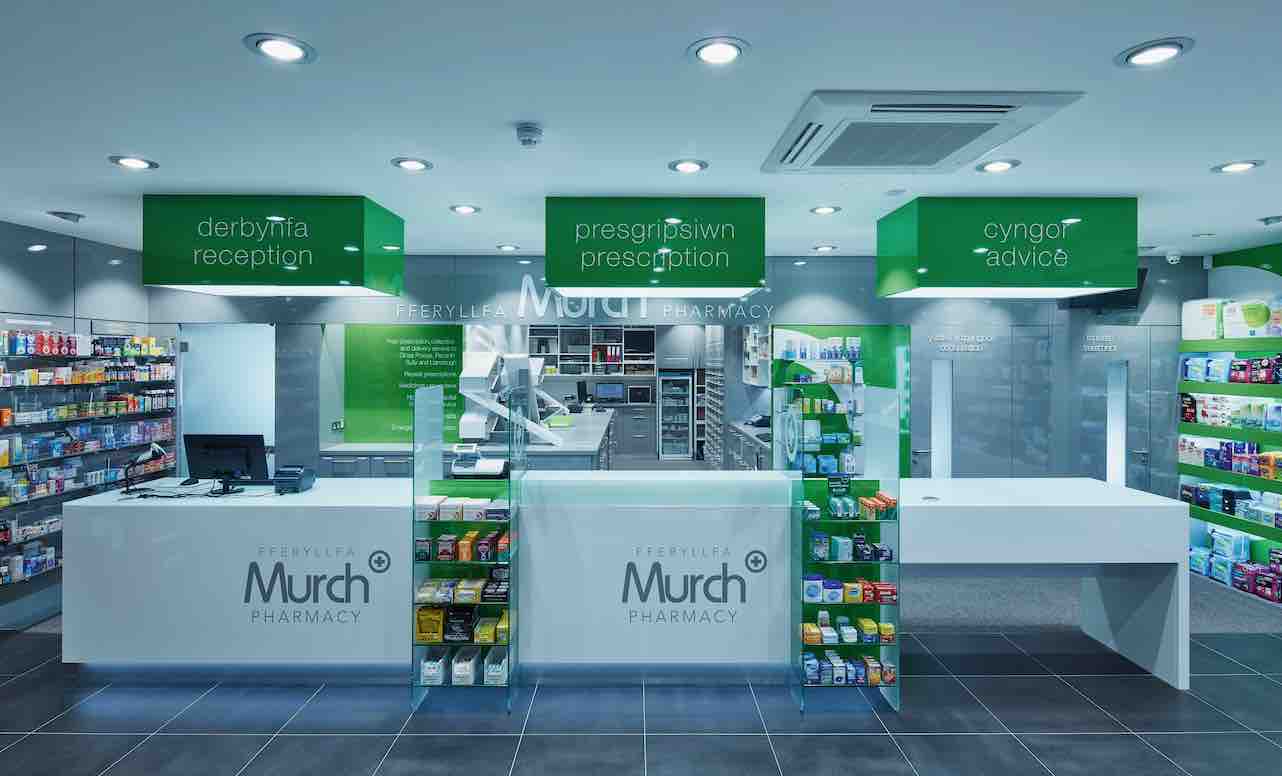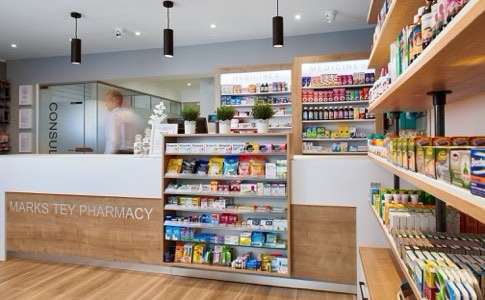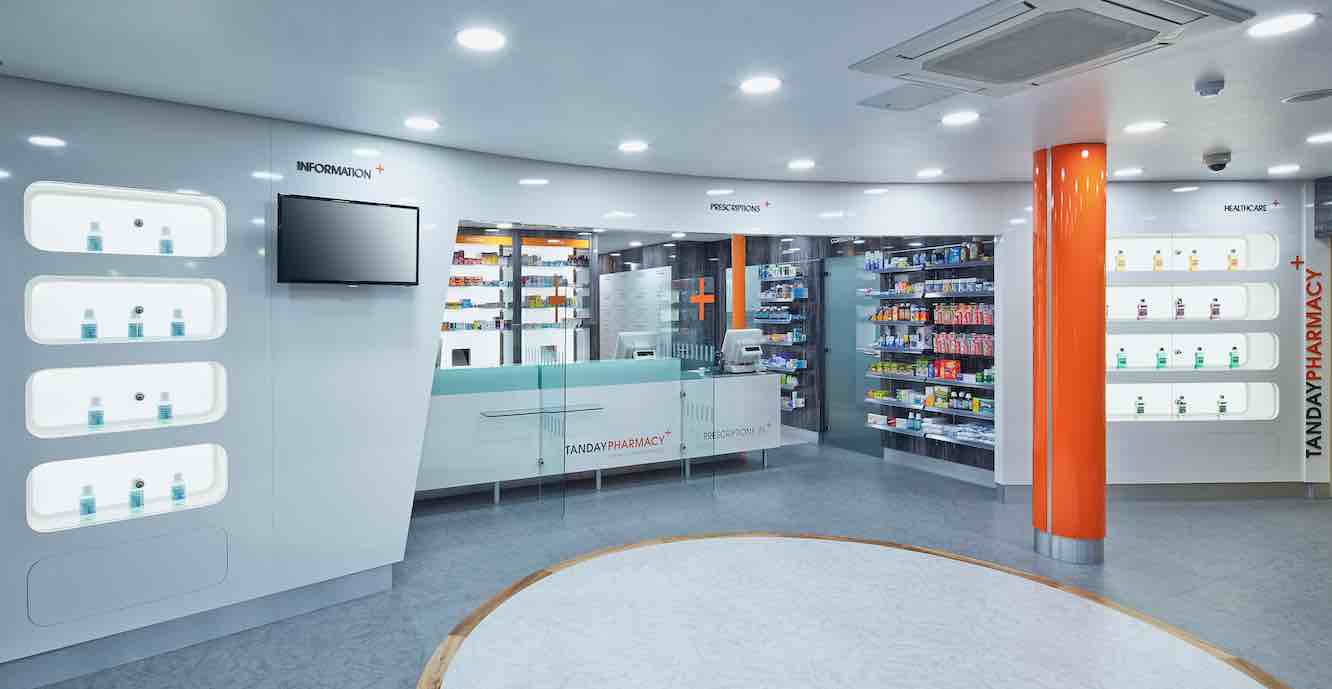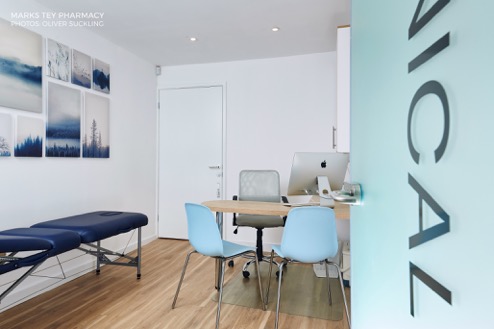Refitting for a competitive future
In Retail & Merchandising
Follow this topic
Bookmark
Record learning outcomes

Refitting a retail premises can help to build on its long-term success, especially when taking into account the needs of its customers. Consumer psychology is a growing area of research, so increasingly retailers are using design to enhance sales by taking into account how, why, where and when people shop. And a refit can help to instill confidence that a pharmacy is professional, inviting and Covid-safe and provides up-to-date healthcare advice.
According to the Shop and Display Equipment Association (SDEA), independent retailers are increasingly in competition with multiples, websites and supermarkets. “The good news is that people still love to shop, but the bad news is their expectations are even greater,” says an SDEA spokesperson. “They want to look good, they want the latest trends, they want to keep up with technology and they want the best. Above all, they want the ‘best’ price.”

Visual merchandising is an important part of any retail experience, and pharmacies need the space to make this work for team and customers alike. Smaller pharmacies in particular, need to maximise on product space while keeping shelves tidy and the floor clear – even more so with social distancing an important consideration.
“There is a clear trend in pharmacies becoming a lot more clinical in their design and presentation,” says Paul Cooper of Crescent Retail Design. “As more services are devolved from GPs, the high street pharmacy has adapted to become an environment where customers and patients can feel confident in the professionalism and competence of the advice and services provided.”
They want to look good, they want the latest trends, they want to keep up with technology and they want the best
Keith Anderson of Anderson Retail Consultants says there has been a reduction overall in pharmacy fit-out work in the UK over the last three years, especially in England, but recent months had seen an increase. “Due to financial pressures and uncertainty about the future, pharmacists have been postponing refits or at least scaling back on investment,” he says. “Apart from the installation of ‘Covid screens’, there was little pharmacy fit-out work from April to June due to the lockdown.
“However, there has been a steady increase in demand since the end of June, with some pharmacists deciding that this is actually a good time to refit due to the availability of cheap finance, the need to implement more permanent social distancing measures and/or that they are already restricting customers to only part of the shop.”
Refit reasoning
According to Keith Anderson, pharmacy customers are now making the decision to refit for various reasons other than Covid-compliance. These include: increasing dispensary efficiency, improving customer flow, introducing automation, increasing consultation space or simply freshening up their professional image. “When I started my company 18 years ago, many pharmacy owners were only interested in the retail area and aesthetics when considering a refit,” he says. “Gradually the focus has moved towards the more efficient and functional, and this has really accelerated over the past five years.”
 When the coronavirus first impacted on the UK earlier this year, there were hopes that extra measures (social distancing, protective screens and use of hand sanitiser) would be short-term, but now it is clear that many of these will need to continue for some time. Therefore, any changes to pharmacy environments need to be flexible.
When the coronavirus first impacted on the UK earlier this year, there were hopes that extra measures (social distancing, protective screens and use of hand sanitiser) would be short-term, but now it is clear that many of these will need to continue for some time. Therefore, any changes to pharmacy environments need to be flexible.
“We are now designing ‘Covid screens’ into pharmacies that look less temporary, but in fact can be easily removed without damaging the refit,” says Keith Anderson. “This is based on the view that some sort of social distancing will be with us at least throughout the winter, but eventually things will return to normal. However, Covid-19 has also accelerated the introduction of other features which actually improve pharmacies, like better hygiene and housekeeping, more efficient dispensing, better customer management, private service areas and prescription collection lockers. Hopefully, these are here to stay.”
“Pharmacists value the safety of their staff and customers above all, and have led the way in creating safe retail environments for staff and customers,” says Paul Cooper. “We have carried out lots of retro-fit installations of these safety measures; counter screens being the most popular. We are also designing many of these measures into new installations to make them less obtrusive and more integrated into the premises. Working closely with our clients, we are seeking to create as safe an environment as possible, yet one that remains welcoming and maintains a positive flow of customers, services and information.”

A pharmacy refit isn’t only about improving customer-facing areas. It can make more efficient use of the existing space behind the scenes too. For most pharmacies, space is at a premium, with a need to incorporate multiple functions. A well-designed dispensary, for example, needs to maximise on storage space, while consultation rooms need to be large enough to maintain comfort and privacy while allowing space for social distancing measures, equipment and handwashing facilities.
“Consultation and treatment rooms can require a substantial percentage of the square footage available and, as such, the pharmacist needs to be confident of a payback on investment,” says Paul Cooper. “The allocation of space between dispensary, treatment and consultation, retail and administrative/staff areas is crucial to maximising the potential of any location. Further developments in the way traditional services are deployed, such as an increase in dosettes, care home requirements or home delivery services, are also shaping the design of dispensaries to allow dedicated areas for more specialist activities.”
Covid-19 has also accelerated the introduction of other features which actually improve pharmacies
Marks Tey Pharmacy in Colchester had a refit by Crescent Retail Design in February 2020, just before the pandemic began. “We wanted to offer more services to customers, so moved across the road to larger premises,” says Jose Osorio Rodriguez, pharmacist and owner. “The pharmacy is very modern, and uses a more European approach to healthcare. A bigger retail space with gondolas in the centre means we have been able to expand our product ranges, and the dispensing area has better lighting and is much larger, making it easier for the team to move around.
“We also built a large consultation room and a clinical room, so that we could offer a travel vaccines clinic in addition to our other services. We have recently been using these for flu jabs; having the two rooms has made it much easier to practise social distancing. Customers have been impressed by the changes – although we are limited to only two customers at any one time in the pharmacy – and we have space for a four-chair seating area.”
Improving efficiency
The use of technology can help to make dispensing easier for the pharmacy team, while enhancing the shopping experience for pharmacy customers. “Due to our reputation for dispensary design, about 75 per cent of our pharmacy projects include automation,” says Keith Anderson. “During the downturn over the past three years, some of our clients made the decision to delay the introduction of a large dispensing robot so they could invest in a pouch or tray robot. Prescription collection locker systems have become very popular over the last year, and especially since the Covid-19 restrictions.”
Paul Cooper says many pharmacists using Crescent Retail Design for refits have adopted further measures such as electronic queuing systems, externally accessible vending machines, touch screens for sales, gondola positioning and secure door systems that control the entry and exit of customers. “Pharmacy owners understand the strong link between their premises and their turnover and profits,” he says. “Design and branding are also on the rise, with pharmacies looking to create a statement with their retail and public areas.
“We’re employing a wide range of materials and construction techniques such as intricate ceiling features and bespoke retail furniture to help create that ‘wow factor’. The impact of intelligently designed and professionally installed premises cannot be underestimated. The process of the design and installation of a new pharmacy is the pharmacy owner’s main opportunity to shape and grow their business.”
Five tips for a successful refit
According to the Shop and Display Equipment Association (SDEA), many independent retailers go wrong by having cramped, cluttered stores. Instead, they should aim for “a modern, minimal interior, backed up by good customer service”. The SDEA has the following tips for any retailer looking to increase sales and secure repeat business.
- Create a clean and more spacious environment where the customer feels comfortable and wants to stay longer
- Branding is vital. Whether you are an independent or multiple chain store, the overall design must reflect your corporate identity, brand heritage and outlook
- Consider the products you stock and how they fit together, which colours and styles work best together, what they convey and what you want to get across to the public. Younger customers may prefer bright and bold, while 30 to 40-somethings may be attracted to a more stylish and elegant premises with a contemporary edge. For an older clientele, choose classic colours and themes with a twist (taking into account that older people are not as ‘old’ as they used to be)
- Stunning windows bring shoppers in. Be creative, use lots of colour and have fun. Get it right and a powerful window will continue to work when the shop is closed. Windows and instore displays must work together in order to entice the customer in and excite them into purchasing
- Good lighting is essential and can make or break a great store layout. Bright lighting is imperative for successful display, way finding and that feel-good factor.

Picture key (top to bottom) 1. Multiple private service counters 2. Retail comes in all shapes and sizes. Working closely at the design stage can play dividends for years to come 3. Multiple service points, clean display areas and consultation room 4. Consultation and treatment space is a crucial element of effective pharmacy design. Done well, this can also be an additional source of income 5. Design and presentation is playing a more significant role when considering a refit; functionality remains key but more focus is definitely placed on individuality.
Images 1,3 Anderson Retail Consultants 2,4,5 Crescent Retail Design
